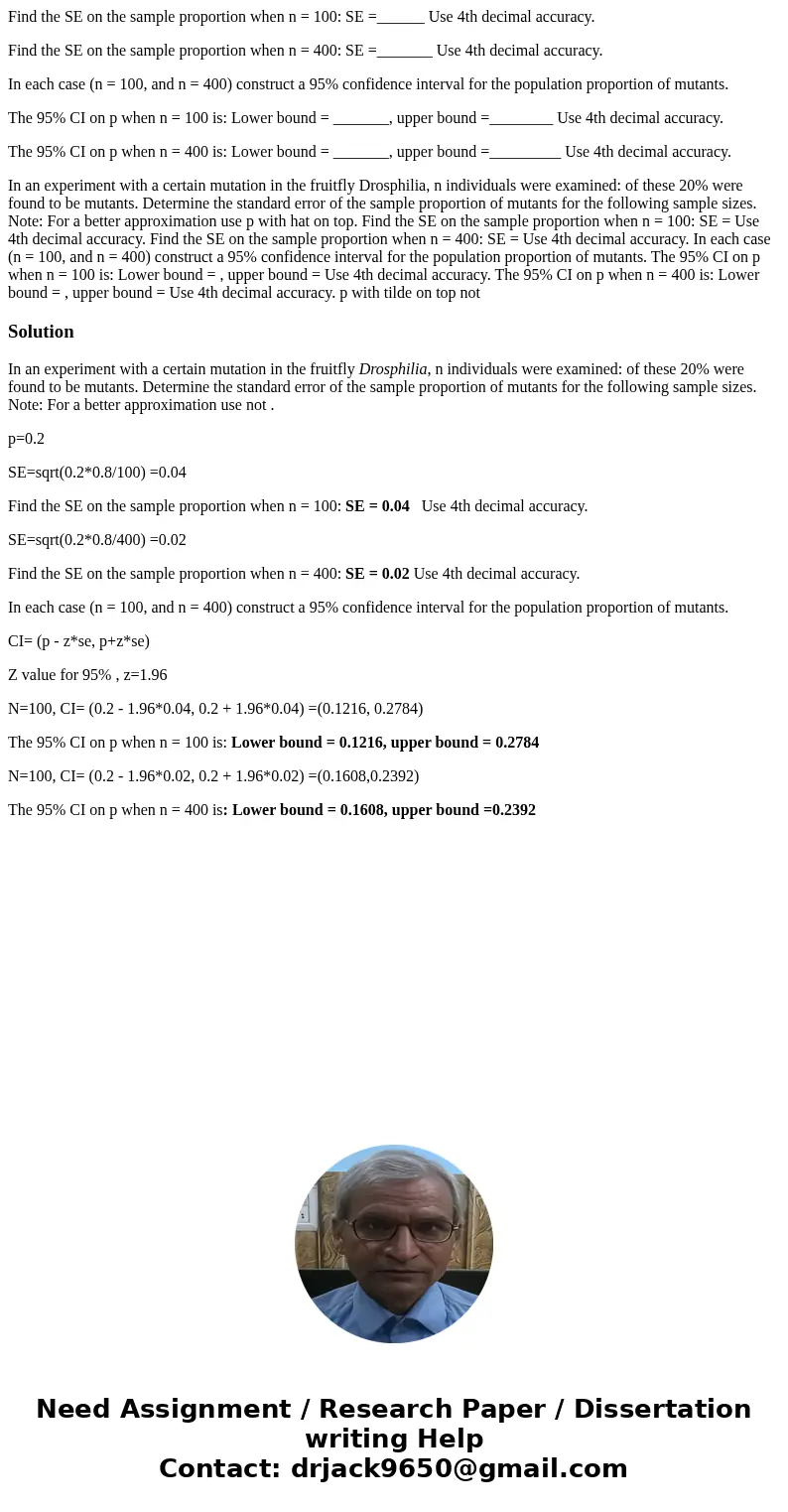Find the SE on the sample proportion when n 100 SE Use 4th
Find the SE on the sample proportion when n = 100: SE =______ Use 4th decimal accuracy.
Find the SE on the sample proportion when n = 400: SE =_______ Use 4th decimal accuracy.
In each case (n = 100, and n = 400) construct a 95% confidence interval for the population proportion of mutants.
The 95% CI on p when n = 100 is: Lower bound = _______, upper bound =________ Use 4th decimal accuracy.
The 95% CI on p when n = 400 is: Lower bound = _______, upper bound =_________ Use 4th decimal accuracy.
In an experiment with a certain mutation in the fruitfly Drosphilia, n individuals were examined: of these 20% were found to be mutants. Determine the standard error of the sample proportion of mutants for the following sample sizes. Note: For a better approximation use p with hat on top. Find the SE on the sample proportion when n = 100: SE = Use 4th decimal accuracy. Find the SE on the sample proportion when n = 400: SE = Use 4th decimal accuracy. In each case (n = 100, and n = 400) construct a 95% confidence interval for the population proportion of mutants. The 95% CI on p when n = 100 is: Lower bound = , upper bound = Use 4th decimal accuracy. The 95% CI on p when n = 400 is: Lower bound = , upper bound = Use 4th decimal accuracy. p with tilde on top notSolution
In an experiment with a certain mutation in the fruitfly Drosphilia, n individuals were examined: of these 20% were found to be mutants. Determine the standard error of the sample proportion of mutants for the following sample sizes. Note: For a better approximation use not .
p=0.2
SE=sqrt(0.2*0.8/100) =0.04
Find the SE on the sample proportion when n = 100: SE = 0.04 Use 4th decimal accuracy.
SE=sqrt(0.2*0.8/400) =0.02
Find the SE on the sample proportion when n = 400: SE = 0.02 Use 4th decimal accuracy.
In each case (n = 100, and n = 400) construct a 95% confidence interval for the population proportion of mutants.
CI= (p - z*se, p+z*se)
Z value for 95% , z=1.96
N=100, CI= (0.2 - 1.96*0.04, 0.2 + 1.96*0.04) =(0.1216, 0.2784)
The 95% CI on p when n = 100 is: Lower bound = 0.1216, upper bound = 0.2784
N=100, CI= (0.2 - 1.96*0.02, 0.2 + 1.96*0.02) =(0.1608,0.2392)
The 95% CI on p when n = 400 is: Lower bound = 0.1608, upper bound =0.2392

 Homework Sourse
Homework Sourse